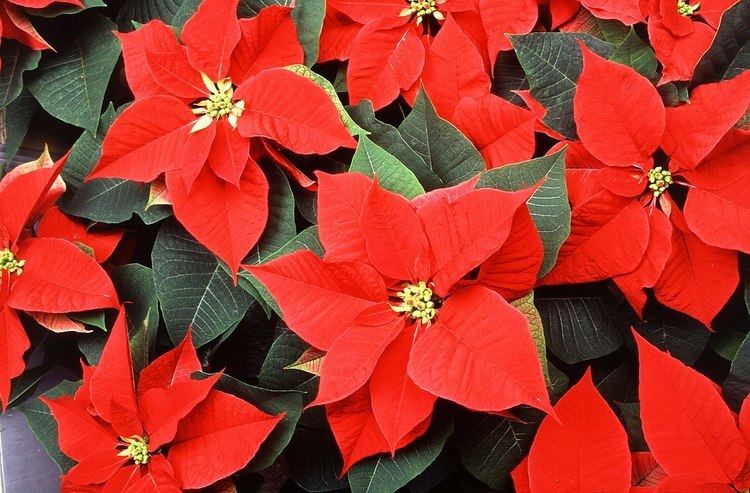Rank Subgenus | Higher classification Spurges | |
 | ||
Similar | ||
Euphorbia subg. Poinsettia is a subgenus deriving from the genus Euphorbia, and is endemic to North America. It contains around 24 species, of which the best known is E. pulcherrima, the poinsettia.
Contents
This species grows wild in the mountains on the Pacific slope of Mexico, and despite many legends, no one is quite sure from which wild populations the cultivated varieties derive.
This taxon was first published at genus rank under the name Poinsettia by Robert Graham in 1836. It was demoted to a section of Euphorbia as E. sect. Poinsettia by Henri Ernest Baillon in 1858, but promoted to subgenus rank by Homer Doliver House in 1924. Recent studies have confirmed its monophyly.
Its many species include:
The common name "Wild Poinsettia" is sometimes applied to two of these species.
History & Legends of the Poinsettia
The Aztecs called poinsettias "Cuetlaxochitl." During the 14th - 16th century the sap was used to control fevers and the bracts (modified leaves) were used to make a reddish dye.
Montezuma, the last of the Aztec kings, would have poinsettias brought into what now is Mexico City by caravans because poinsettias could not be grown in the high altitude.
The botanical name, Euphorbia pulcherrima, originated as an annotation of a herbarium specimen by the German botanist, Carl Ludwig Willdenow and was first published by Johann Friedrich Klotzsch in 1834.
Joel Roberts Poinsett was the first United States Ambassador to Mexico being appointed by President John Quincy Adams in the 1820s. At the time of his appointment, Mexico was involved in a civil war. Because of his interest in botany he introduced the American elm into Mexico. During his stay in Mexico he wandered the countryside looking for new plant species. In 1828 he found a beautiful shrub with large red flowers growing next to a road. He took cuttings from the plant and brought them back to his greenhouse in South Carolina. Even though Poinsett had an outstanding career as a United States Congressman and as an ambassador he will always be remembered for introducing the poinsettia into the United States.
In the early 1900s the Ecke family of southern California grew poinsettias outdoors for use as landscape plants and as a cut flower. Eventually the family grew poinsettias in greenhouses and today is recognized as the leading producer of poinsettias in the United States.
Caring for the Poinsettia
The length of time your poinsettia will give you pleasure in your home is dependent on (1) the maturity of the plant, (2) when you buy it, and (3) how you treat the plant. With care, poinsettias should retain their beauty for weeks and some varieties will stay attractive for months.
After you have made your poinsettia selection, make sure it is wrapped properly because exposure to low temperatures even for a few minutes can damage the bracts and leaves.
Unwrap your poinsettia carefully and place in indirect light. Six hours of light daily is ideal. Keep the plant from touching cold windows.
Keep poinsettias away from warm or cold drafts from radiators, air registers or open doors and windows. Ideally poinsettias require daytime temperatures of 60 to 70 °F and night time temperatures around 55 °F. High temperatures will shorten the plant’s life. Move the plant to a cooler room at night, if possible. Check the soil daily. Be sure to punch holes in foil so water can drain into a saucer. Water when soil is dry. Allow water to drain into the saucer and discard excess water. Wilted plants will tend to drop bracts sooner.
Fertilize the poinsettia if you keep it past the holiday season. Apply a houseplant fertilizer once a month. Do not fertilize when it is in bloom.
With good care, a poinsettia will last 6–8 weeks in your home.
